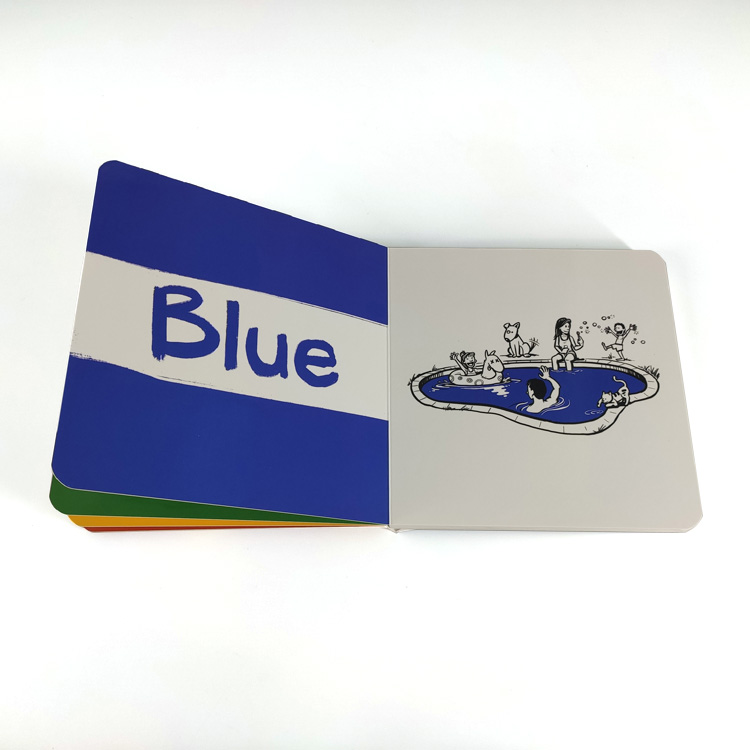Board books are a beloved staple in children's literature. Board books offer young readers a durable and interactive reading experience. When it comes to producing board books, choosing the right printing technique is essential to ensure a high-quality and long-lasting product. In this article, we will explore the different printing options available for board books and delve into their respective benefits.

Offset Printing:
Offset printing is a widely used technique in the printing industry. Due to its versatility and ability to produce crisp and vibrant images. This method involves transferring ink from metal plates to a rubber blanket. Which then transfers the ink to the printing surface, typically paper or board stock. Compared to other printing methods, offset printing delivers excellent color accuracy, sharp details, and high-quality resolution.
For board books, offset printing is an ideal choice for achieving vivid illustrations and complex designs. The method's ability to accurately replicate intricate artwork. It ensures that the visuals on each page are captivating and engaging for young readers. Offset printing is also suitable for printing large quantities, making it a cost-effective option for mass production.
Digital Printing:
Digital printing has gained popularity in recent years due to its speed, affordability, and flexibility. Unlike offset printing, digital printing does not need to make plates. That making it a more straightforward and efficient process. This method involves transferring the digital image directly onto the desired printing surface through electronic data.
Digital printing is well-suited for short to medium print runs and offers quick turnaround times. It allows for on-demand printing, which is particularly beneficial for publishers. Or authors who require small quantities or personalized board books. Additionally, digital printing offers excellent color accuracy. It also can reproduce vibrant illustrations and photographs.
Screen Printing:
Screen printing, also known as silk screening. It is a versatile printing technique that involves pushing ink through a mesh screen onto the printing surface. Each color requires a separate screen, allowing for precise color layering and vibrant visuals. Screen printing is commonly used for printing on uneven or specialty materials like board stock.
Screen printing is suitable for board books that require bold and solid colors without intricate details. This method offers excellent opacity and durability. That making it a preferred choice for board books that undergo rigorous handling by young readers. Screen printing can add texture and dimension to the illustrations, enhancing the tactile experience of the book.
UV Printing:
UV printing is a modern and advanced printing technique. That uses ultraviolet (UV) light to quickly cure the ink onto the printing surface. This process results in vibrant colors, excellent image sharpness, and enhanced durability. UV printing is commonly used on a variety of materials, including board stock.
For board books, UV printing offers several advantages. The cured ink is resistant to scratching and scuffing, making it ideal for books that will be handled by young children. UV printing also provides a glossy and smooth finish. Enhancing the overall aesthetic appeal of the illustrations and graphics on the board book pages.
Choosing the Right Printing Technique:
When selecting the appropriate printing technique for your board book, several factors should be considered:
Quantity:
If you require a large print run, offset printing would be a cost-effective choice. For smaller quantities or personalized printing, digital printing might be more suitable.
Artwork Complexity:
If your board book contains intricate illustrations or photographs. Offset printing can reproduce them with precision. For solid colors or simple designs, screen printing or UV printing can provide the desired effect.
Budget:
Consider your budget constraints and compare the costs associated with each printing technique. Offset printing usually more cost-effective for large print runs. While digital printing may be more economical for smaller quantities.
Timeframe:
Assess your printing timeline. Digital printing offers quick turnaround times. While offset printing may require more lead time due to setup and production processes.
Conclusion:
Selecting the appropriate printing technique is vital to the successful production of board books. Digital printing, offset printing, screen printing and UV printing. Each offer unique benefits depending on factors such as artwork complexity, quantity, budget, and timeframe. Understanding the strengths of each technique will enable you to make an informed decision. And ensure that your board book printing is visually appealing, durable, and engaging for young readers.

